Last year was the safest year in the American workplace, but heights, weather and heavy equipment still put many people at risk. Which 10 jobs are the worst?
Only 4,340 people died on the job last year, down 16.8% from 2008, according to new data released Thursday by the Bureau of Labor Statistics.
That's a rate of 3.3 deaths per 100,000 workers -- the lowest ever reported by the BLS.
Here's a look at some of the most dangerous jobs and how workers keep themselves safe.
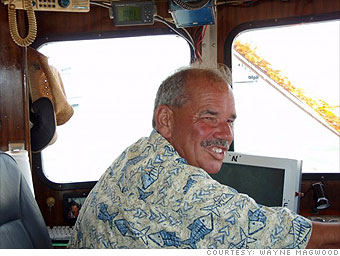
Median wages: $23,600
The most perilous job in the U.S. is held by those who fish the waters in cold-weather states. Freezing water and icy boat decks can lead to horrific accidents, and storms can swamp small fishing vessels, sometimes claiming entire crews.
Compounding the danger is catch rules: By limiting fishing seasons, fisheries management creates a race to fish, according to the Environmental Defense Fund.
That forces fishermen out in dangerous weather and keeps exhausted crews on the water. In Alaska, the season for halibut and crab has been, at times, reduced to just three days.
Even warm-water fishers face hazards. Wayne Magwood has shrimped the waters off South Carolina for 40 years and says the biggest danger is heavy machinery, such as the power winches and cables that haul nets and other equipment.
"My dad taught me to keep my shirt tucked in," says Magwood. "Your clothes can get tangled up and you can get pulled overboard. One guy broke his neck recently."
Magwood also lost a friend when the crewman was answering nature's call and a sudden roll pitched him into the water.

Median wages: $34,440
Logging takes an annual toll like few other occupations. The biggest hazard, according to Roger Smith of RL Logging in Olympia, Wash., comes from logging mountain slopes.
"You're working steep terrain with 70-degree, 80-degree grades with rocks and sliding logs," he says.
About half the time, he's taking down 60- to 70-year-old trees with trunk diameters of 30 inches or more. If not felled correctly, these can go crashing down slopes, rolling over anyone in their paths.
"A lot of the time, what gets cutters is if they don't see something," Smith says. "Like trees growing together or snags."
The old forest canopies often have those snags, which are big dead branches that break off and can fall erratically when the tree comes down. Loggers call them "widow makers."
Even after the trees are cut, the job of loading them can be tough.
"Somebody just got killed here last Thursday," he says. "He was running a harvester and one of the teeth of the chain broke off and went right through the bulletproof glass window of his cab."
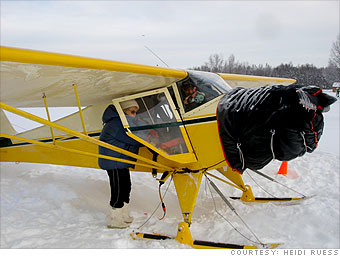
Median wages: $106,240
When former Alaska Sen. Ted Stevens died in a small plane accident recently, it underscored the hazards Alaskan bush pilots face.
That crash followed the script of many Alaskan accidents, where the most common cause of fatalities is "flying into terrain, under speed," according to the BLS.
Heidi Ruess, an Anchorage-based bush pilot with 40 years experience, says, "You can't compare Alaskan flying with the rest of the country."
Volatile Alaskan weather and vertical topography can cause pilots to lose visibility in fog and fly into steep mountainsides.She used to take tourists, hunters and fishermen out to remote locations until she flipped her Cessna 185. She had only three passengers -- the plane can take five -- but she was still over-loaded because, in addition to gear, they had packed up four or five caribou.
"We don't have roads [in Alaska] and you can't drive in to pick up the gear and the game," she says.
She also flipped a float plane a few years before as she landed to pick up duck hunters. She tried to use mud to brake but it was frozen and the plane hit a big ditch and sent her tumbling.
After that, she concentrated on teaching. She cautions her students that the two biggest reasons for flying accidents are physical conditions, which pilots can rarely do much about, and judgment, which they can.
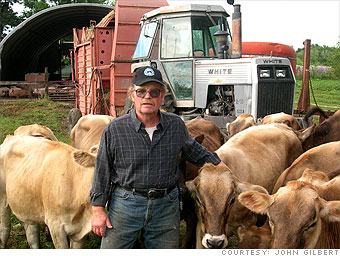
Median wages: $32,350
Both farmers and ranchers deal with many hazardous conditions in their workplace. In many cases, accidents result when workers get fatigued or hurry to complete a job.
"When you're tired, you may take shortcuts you shouldn't," says John Gilbert, who, along with his four brothers and eldest son, runs a big dairy and pork farm near Iowa Falls, Iowa. "Raising and harvested crops, you have short windows to get things done in the spring and fall. That leads to a lot of rushing around."
Many agricultural workers die one of three ways: being pinned in overturned tractors, truck collisions and animal incidents.
One of the biggest hazards for farmers around Gilbert's home ground is moving around augers that transfer grain from trucks or bins to silos.
"They're tall enough to get tangled in overhead power lines," says Gilbert. "Everybody knows about the hazard and is cautioned about it, but accidents happen anyway."
Almost as dangerous is taking to the roads on slow moving tractors or combines. Drivers inexperienced in rural travel may confuse the hazard lights and directional signals and think the farmer is turning left instead of right. That leads to farmers sometimes turning directly into the path of an oncoming car or truck.
Gilbert himself has been cautious, and lucky, never sustaining a disabling injury. And he does not consider farming a job: "It's a way of life," he says.
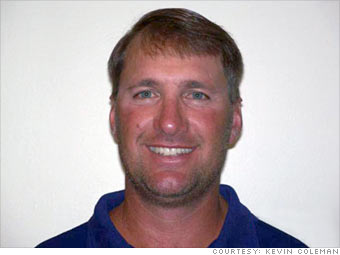
Median wages: $33,970
Height increases danger -- and roofing is an occupation where elevation is part of the job description.
Kevin Coleman has been roofing safely for 24 years, since age 18. He works commercial buildings with mostly flat roofs, so the possibility of falling is lower. Although he has worked as high as a 70-story building in downtown Chicago.
One particular hazard is hot tar. The roofers work with big buckets of the stuff heated to as much as 525 degrees.
"I got hurt only once," says Coleman. "A guy's shirt with a lighter in the pocket fell into the tar and exploded. My face was covered." He escaped with only a few scars.
Safety has increased for roofers.
"When I started, it was `Get up on the roof and go,'" he says. "Now you take OSHA safety courses and there's more safety equipment, too."
Roofers can fall even off flat roofs with no wall height, so one innovation was to set up a line of flags, six feet from the roof's edge, like an outfield warning track.
There's also more protection, such as restraints and nets, to catch workers when they do fall. But the prime reason for a steady drop-off of injuries and fatalities is better training, according to Coleman.
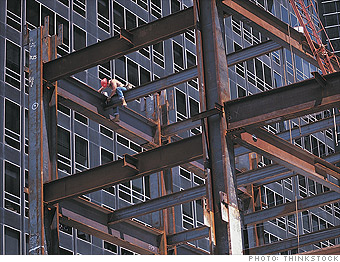
Median wages: $44,500
The men and women who build the skyscrapers and bridges of modern America have always been held in awe by the general public.
Images of them walking a four-inch steel beam hanging 500-feet above the street or sliding down an I-beam illustrate the conditions that would have lesser workers curling into a fetal position and crying for their mommies.
Steve Rank helped build downtown Houston in the 1980s and now works to improve ironworker safety via negotiated rule-making with OSHA.
One thing that has changed is the number of anchor bolts set in concrete has doubled. These bolts help hold beams steady as they go up. In the past, many bolts failed.
"The structure would fall like a house of cards," Rank says.
Site preparation is also a major issue. "Before, it would look like a scud missile hit, everything underwater in mud," Rank explains. "We'd be offloading steel and the truck wheels would sink, shifting the beams and crushing people."
Rank is still negotiating with OSHA to get better rules for reinforced-concrete buildings. These can be 20-story high constructions of poured concrete with steel rebar embedded in them.
"We want to do the same thing for reinforced concrete we did with structural steel to make the job site safer," he says.
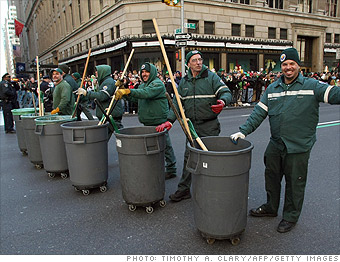
Median wages: $32,070
Martin Luther King was assassinated in Memphis Tenn., when he came to support black sanitation workers who were striking against unequal treatment.
Ironically, 40 years later, that conflict continues to have an impact on the health and safety of Memphis sanitation workers.
According to Warren Cole, the president of the union local, black workers were frozen out of the city pension plan years ago, leaving them only social security. Many have had to keep working at this demanding job much longer because they can't afford to retire.
"We lost one of our workers last week," said Cole. "Emmite Johnson had finished running his route. Memphis has been averaging about 100 degrees with high humidity, and he fell waiting for a bus. He was 70 years old."
Summer may be tough on sanitation workers, but they also endure hazardous wastes all year long. Cole said a new peril is from portable meth labs, which are set up in vans or automobiles.
There's also the heavy equipment, like compactors, that can grab and crush workers if they're not careful.
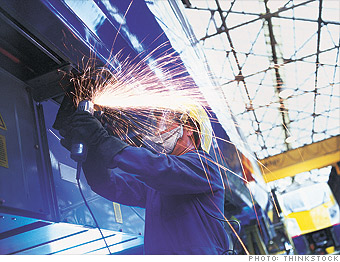
Median wages: $39,600
One of the biggest hazards of working with industrial machinery is handling the heavy weights. Machines can buck or shift, easily crushing a fragile human being.
Machinery in use in unforgiving. Loose clothing or long hair can be caught by chains or gears and mangle workers before the equipment can be brought to a stop.
Fortunately, better safety equipment and more comprehensive training has made working with machinery safer, according to David Merrifield, a Missouri-based safety consultant.
"There are better standards for safety and training," he says. "A well-trained operator can avoid accidents and make the accidents that do happen less severe."
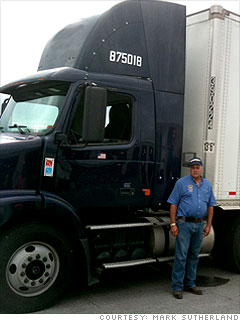
Median wages: $37,730
Mark Sutherland is a long-haul trucker with a track record of 2 million miles without an accident. But not all drivers can make that boast.More truckers and sales delivery men die on the job than any of the other top 10 occupations due to a moderately high fatality rate and a large number of workers.
Vigilance is vital but that can be hard to maintain, especially with truckers under pressure to produce. Government deregulation, according to Sutherland, has increased competition and squeezed profit margins. Some drivers and companies cut corners.
"They do what it takes," says Sutherland, "and some of the terrible accidents you see are the result."
For truckers pushing the limits, speeding and driving too long without proper rest take a toll. Things happen quickly when a big rig is rolling down the road at 75 miles per hour and the driver's attention has wandered after 10 hours with only a short break or two.
"You have to constantly pay attention," says Sutherland. "You can't have enough eyes. You have to adjust to conditions."
His pet peeve is the drivers who come to a dead stop at construction zones for no reason. That, fog, ice and snow are the most hazardous physical conditions that truckers face.
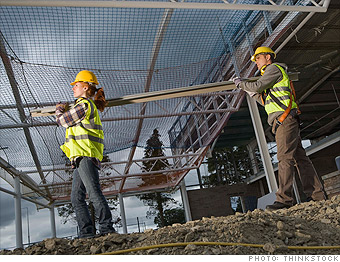
Median wages: $29,150
Building sites contain many of the hazardous conditions present in many of the most dangerous jobs. Workers are outdoors in all sorts of weather conditions, often at great heights and exposed to heavy materials and machinery.
A laborer was killed at McCarren Airport in Las Vegas early in 2009 when an earth-moving shovel ran over him. Later in the year, a Michigan laborer died when a diesel tank exploded. In New Jersey a worker was killed after his clothing entangled in a rotating machine drilling pipe.
Safety has sometimes been an afterthought on some construction jobs, but government regulations and heightened awareness by companies and the workers themselves have helped to steadily pare down casualties.
By Les Christie, staff writer




No comments:
Post a Comment